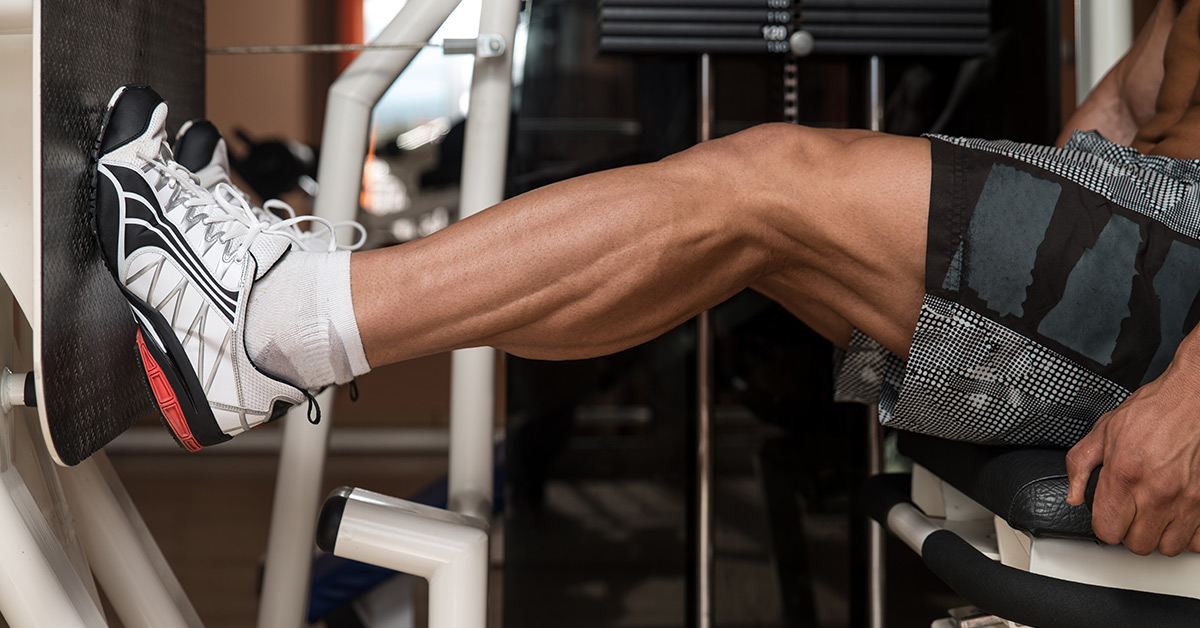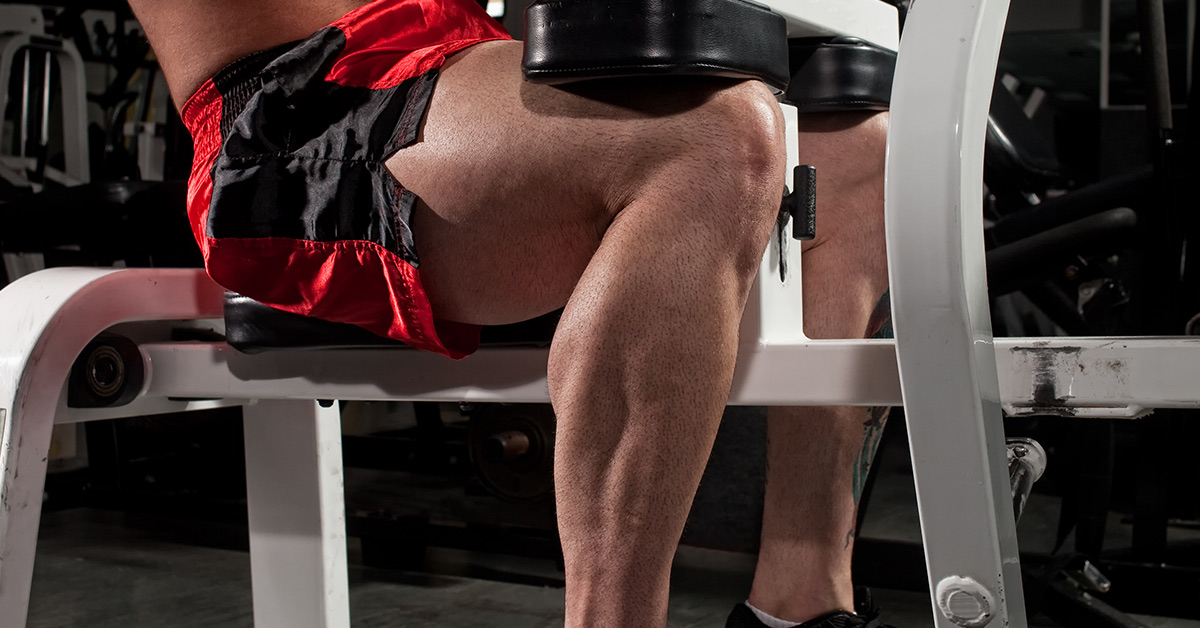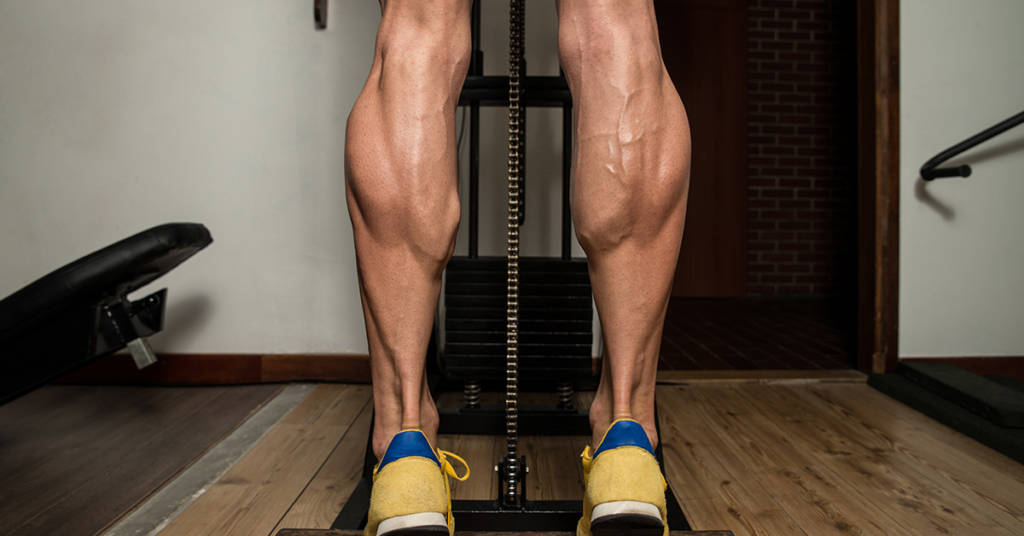We have almost come to the end of the body’s muscle groups; We have now covered all of the main groups that are trained the most, but to complete the picture of both this sequence and the physical that you are working on, we have to get through to the very end. This time, we’ll cover many people’s least favorite muscle group. Some apparently do not even know that this is a muscle group, because they are not trained by everyone. We are of course talking about calf training! Even if you train your thighs well and they are well developed (compliments to yourself in this case) you still won’t look physically complete without proper calves. Ladies, you too can use a nice pair of calves to make the whole picture more impressive!
ANATOMY AND FUNCTION OF THE CALVES
The calves, or in more official words the triceps surae, consist of 2 muscle groups, both of which have different origins, but come together in the Achilles tendon, their joint insertion. For people who have looked at the pictures of Life fitness equipment in the gym, the names may be familiar: The gastrocnemius and the soleus. The latter lies below the gastrocnemius, but is larger in muscle volume. For that reason, training the soleus is certainly important for lower legs with good volume.
Unlike the soleus, the gastrocnemius has two muscle heads, an inner (medial) and an outer (lateral). The origin of the gastrocnemius is on the femur and attaches to the heel through the Achilles tendon. For this reason, the gastrocnemius, like for example the biceps and rectus femoris (have you read the articles on arms and thighs?), Is bi-articular. This means that this muscle spans 2 joints, and can therefore exert forces over 2 joints. Important for how we train these muscles optimally! This allows this muscle to perform both knee flexion (bending the knee backwards like a leg curl) and plantar flexion (pushing the foot down, like you do when you step on a gas pedal).
The soleus originates on the fibula and tibia, and its insertion, along with the gastrocnemius, on the heel via the Achilles tendon. For this reason, the soleus can only act on the ankle joint; plantar flexion.
WHY DO CALVES GROW SO DIFFICULT?
Many people think that growing calves is all about genes; if you have bad genes, you will never get good calves.
There is little or no evidence for this from the literature, but this (probably incorrect) line of thought can certainly be explained. First of all, according to some articles, the androgen receptors high in the upper body are the most sensitive / most present and the further down you go, the less they are expressed. This could be one reason why calves grow less easily. (next time someone pisses off the sticks that go as your legs just throw it on here). I wonder whether this is the reason in practice, since the thighs usually respond well to training and are very sensitive to growth, also compared to, for example, the shoulders.
Another reason that the calves grow less easily than other muscle groups could be due to the fact that the muscle fiber type distribution is very close to fiber type 1; in other words, the calves consist mainly of slow twitch fibers. (Gasctrocnemius is said to be around 70% slow twitch, according to a study, and the soleus even around 90%). Since fiber type 2 (fast twitch) has a greater potential for hypertrophy, this could be a reason that the calves grow less than other parts of the body.
So much for the reasons beyond ourselves. It’s nice and easy to put the blame back on external factors. But be honest with yourself. How many work sets per week do you do for triceps? And for brisket? What about biceps? Okay, and answer that same question for calves. Probably a lot less …

THE OPTIMAL CALF TRAINING
As we have seen, there are two muscles that we want to train, with a partly overlapping function. It is precisely for this reason that anatomical knowledge is important. Since both muscles provide plantar flexion, we cannot differentiate or emphasize one of the two. What we can do is look further. We have seen that the gastrocnemius also spans the knee joint. The soleus does not. For this reason there is a difference between standing and seated calf exercises (straight or bent legs). In a bent leg, the gastrocnemius is already shortened at the top of the knee. For that reason, he is less able to shorten over the ankle joint in a sitting position. In other words, we put the gastrocnemius at a disadvantage in this way, which gives the soleus an advantage.
During seated exercises, the soleus will therefore do more work than the gas octrocnemius. In principle, both muscles work efficiently during standing exercises. This effect is not an all or nothing matter; the further the knee is bent between 0 and 90 degrees, the less efficiently the gastrocnemius can work.
THE BEST EXERCISES FOR THE CALVES
In terms of calf exercises we can think of a lot, but in the end we arrive at 2 variants; standing and sitting. Since the gastrocnemius also interferes with knee flexion, it will also be trained for leg curls, for example.
Donkey calf raises, standing calf raises, calf press in leg press, unilateral standing calf raise etc are all knee straight options; With the knee bent we arrive at a seated calf raise. The latter can sometimes cause knee pain; For the people who experience this I recommend doing the seated calf raise with an elastic band over your ankles, with an anchor point behind your feet (shared several times on my instagram; see there for more info). In this way, the load on the knee remains minimal, while the calf muscles do receive their load.
Another good tip is not so much thinking about moving the heel up and down, but rather ‘moving the heel over your big toe in concentric trajectory’. During PTs, I notice that this incentive makes for a much tidier execution. In addition, it is good to realize that the Achilles tendon is very good at storing elastic energy. For that reason it is good to perform the exercises neatly and quietly and to take a short break at the bottom before you do the next repetition; that bouncing up and down what you see a lot of people doing with crazy weights on their necks makes no sense at all. A seated calf raise isn’t a seesaw either. Keep your body weight in front of the pivot point as much as possible rather than above or even behind it.
AN INSIDE AND AN OUTSIDE?
Finally, we can talk about the foot position and its effect on the calves; Since the gastrocnemius has two heads (medial and lateral) you might think that turning the foot in or out could affect which head is most addressed and that we could shift the emphasis a bit. However, rotation of the leg is done from the hip; since neither of the two calf muscles spans the hip joint, this rotation will have no effect on which of the two heads of the gastrocnemius is stressed; studies indicate this too, and a rotated foot position can make you a lot more susceptible to injury, so be careful when trying this out.
THE OTHER TRAINING VARIABLES
Considering that both calf muscles have more slow twitch fibers, slightly higher repranges are recommended, but again: variation is the key to success. You probably won’t achieve optimal results with only high repranges and lighter loads.
The calves are optimally exercised two to three times a week, with one bent and one straight knee at least twice a week. (remember that the gastrocnemius also cooperates with leg curls ..!)
Full range of motion, no bounce, neat execution!

SAMPLE CALF TRAINING SCHEDULE
TRAINING 1
A Calf press in leg press (fine in superset with quads), 4 sets of 8 reps
B seated calf raise, 3 sets of 12 reps
TRAINING 2
A donkey calf raise, 4 sets of 6 reps
B seated calf raise with elastic over ankles, 3 sets of 20 reps
TRAINING 3
A Seated calf raise, 4 sets, 8 reps
B Calf press machine, 3 sets, 15 reps
Don’t give up and hold on. I do not want to claim that my calves are good, but by applying this knowledge I have gained 4-5 centimeters in girth in a year.

